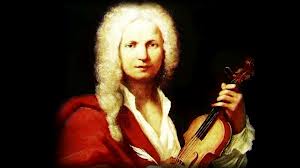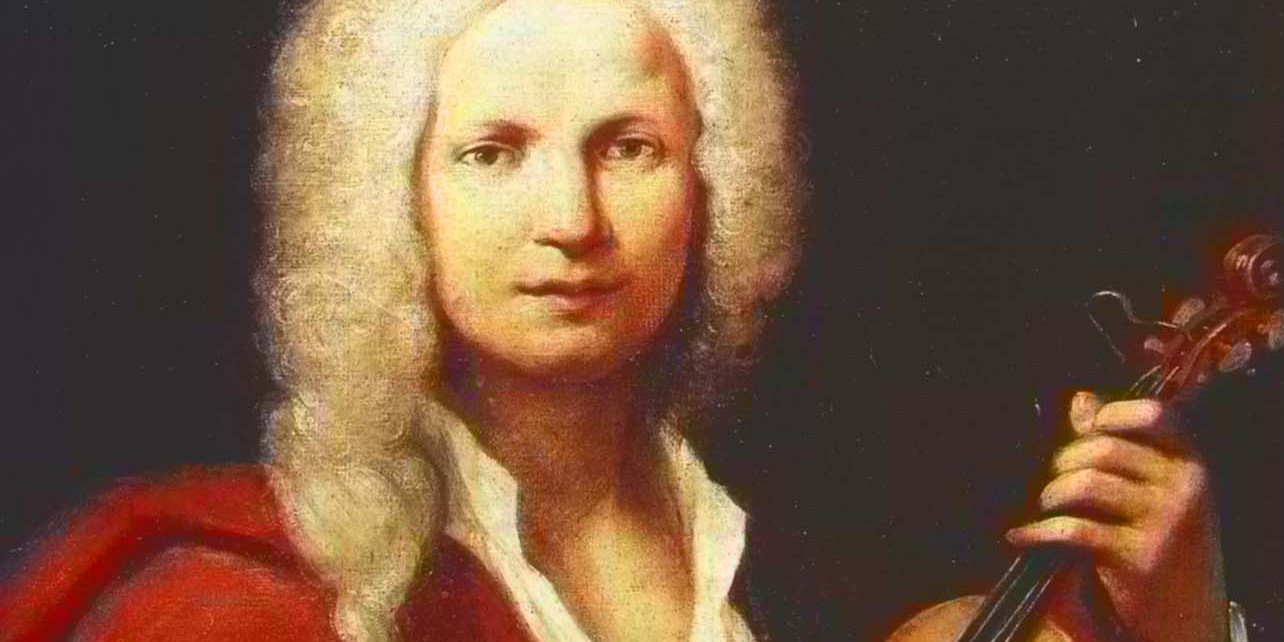Antonio Vivaldi: A Comprehensive Biography
Introduction
Antonio Lucio Vivaldi (1678-1741) stands as a towering figure in the landscape of Baroque music. An Italian composer, virtuoso violinist, teacher, and ordained priest, Vivaldi’s prolific output and innovative approach to musical forms left an indelible mark on the development of classical music. While his fame waned for nearly two centuries after his death, a significant revival in the 20th century re-established him as one of the most celebrated and frequently performed composers of the Baroque era. His legacy is primarily defined by his groundbreaking instrumental concertos, particularly those for the violin, alongside a substantial body of sacred choral works and operas. This biography will delve into the various facets of his life, from his formative years in Venice to his extensive travels and the enduring impact of his musical genius.

Childhood and Youth
Born in the vibrant and culturally rich city of Venice, Republic of Venice, on March 4, 1678, Antonio Vivaldi’s early life was steeped in music. His father, Giovanni Battista Vivaldi, was a professional violinist and a barber, who was admitted to the orchestra of the prestigious St. Mark’s Basilica in 1685. It is widely believed that Giovanni Battista provided Antonio with his initial musical training, nurturing his prodigious talent for the violin from a young age. Antonio, the eldest of six children, displayed an early aptitude for music, which was further cultivated within the family’s musical environment.
Despite his musical inclinations, Vivaldi embarked on a path towards the priesthood at the age of 15, receiving his tonsure in 1693. He was ordained as a Catholic priest in 1703. His striking reddish hair, a family trait, quickly earned him the enduring nickname “Il Prete Rosso” (The Red Priest) among his contemporaries. This dual identity as both a cleric and a musician would shape much of his public perception and career.
Vivaldi’s public musical career began early. He made his first known public appearance as a
violinist alongside his father in St. Mark’s Basilica in 1696. His exceptional skill on the instrument quickly became apparent, leading to his appointment as violin master at the Ospedale della Pietà in 1703. The Ospedale della Pietà was one of Venice’s four charitable institutions for orphaned or abandoned girls, and it was renowned throughout Europe for its exceptional musical program. The girls, known as figlie di coro, received rigorous musical training, and those with significant talent formed an acclaimed choir and orchestra. The performances of these young women were not only a source of immense pride for Venice but also crucial for the institution’s financial well-being, attracting donations and legacies from wealthy patrons and visitors.
Vivaldi’s relationship with the Pietà was central to his career, spanning several decades. He served as violin master from 1703 to 1709 and again from 1711 to 1715. Later, he held the position of director of instrumental music from 1716 to 1717 and again from 1735 to 1738. Even when not officially employed, he continued to supply the Pietà with new compositions on a paid external basis from 1723 to 1729 and from 1739 to 1740. This long-standing association provided him with a stable environment for composition and performance, allowing him to experiment with new forms and techniques.
Despite his ordination, Vivaldi largely ceased celebrating Mass shortly after 1703. The official reason given was a chronic chest ailment, believed to be bronchial asthma, which made it difficult for him to stand at the altar. However, some historians suggest that his true passion lay in music, and his priestly duties may have interfered with his artistic pursuits. Nevertheless, he took his status as a secular priest seriously, maintaining a reputation for religious piety, and was even considered by some to be a religious bigot. This complex relationship with his clerical vows and his dedication to music would remain a notable aspect of his life.
Adult Life and Main Compositions
Vivaldi’s early musical compositions, primarily trio sonatas and violin sonatas, began to appear in print in 1705 and 1709, respectively. However, it was with the publication of L’estro armonico (Opus 3) in 1711 that Vivaldi truly established himself as a major force in European music. This collection of twelve concerti for violin and string orchestra, published by the prestigious Amsterdam firm of Estienne Roger, was a groundbreaking work. It showcased Vivaldi’s innovative approach to the concerto form, characterized by clear structures, vibrant melodies, and a dynamic interplay between solo and orchestral sections. L’estro armonico quickly gained widespread popularity and significantly influenced composers across Europe, including Johann Sebastian Bach, who famously transcribed several of Vivaldi’s concertos for organ and harpsichord.
Following the success of L’estro armonico, Roger published three more collections of Vivaldi’s concerti (Opuses 4, 6, and 7) and a collection of sonatas (Opus 5) between 1711 and 1719. These publications further solidified his reputation as a prolific and inventive composer of instrumental music.
Beyond instrumental music, Vivaldi also ventured into sacred vocal music, beginning in 1713. His sacred compositions, including oratorios and motets, were highly successful and led to commissions from various religious institutions. This period also marked his foray into opera, a genre that would consume a significant portion of his creative energy. His first opera, Ottone in villa, premiered in Vicenza in 1713. Vivaldi quickly embraced the dual roles of composer and impresario, actively involved in the production and management of his operatic works.
From 1718 to 1720, Vivaldi served as director of secular music for Prince Philip of Hesse-Darmstadt in Mantua. This period was particularly fruitful, witnessing the creation of some of his most iconic works, including The Four Seasons (Le quattro stagioni). This set of four violin concertos, depicting scenes from nature and accompanied by descriptive sonnets, was part of Il cimento dell’armonia e dell’inventione (Opus 8), published around 1725. The Four Seasons is a prime example of program music, where instrumental music explicitly tells a story or evokes a specific image. Vivaldi’s innovative use of instrumental color, vivid musical imagery, and programmatic elements in these concertos were revolutionary for their time and continue to be celebrated for their expressive power.
Vivaldi’s career was marked by extensive travel throughout Europe, driven by his operatic ventures and a desire to promote his music. He visited major musical centers such as Rome, Florence, Vienna, and Amsterdam, often overseeing the production of his operas and performing as a violin virtuoso. These travels allowed him to connect with patrons, secure commissions, and disseminate his musical style across the continent. Despite his widespread success and recognition, Vivaldi faced increasing financial difficulties in his later years. Changing musical tastes, particularly the rise of the galant style, and his own extravagant lifestyle contributed to his declining fortunes. His prolific output of operas, while initially successful, became less profitable as public preferences shifted.
Death and Conclusion
Antonio Vivaldi’s final years were marked by a decline in his professional standing and financial stability. He left Venice for Vienna in 1740, possibly seeking new opportunities under the patronage of Emperor Charles VI, who had shown great admiration for his music. However, the Emperor’s death shortly after Vivaldi’s arrival in Vienna left the composer without a powerful patron and in a precarious financial situation. Antonio Vivaldi died in poverty in Vienna on July 28, 1741, at the age of 63. He was buried in a simple grave, and his death went largely unnoticed by the musical world at the time.
For nearly two centuries after his death, Vivaldi’s music largely fell into obscurity. His vast output was overshadowed by the works of other Baroque masters like Johann Sebastian Bach and George Frideric Handel, whose music continued to be performed and studied. It was not until the early 20th century that a renewed interest in Baroque music, coupled with dedicated scholarship and the discovery of forgotten manuscripts, led to a widespread rediscovery and appreciation of Vivaldi’s genius. Scholars like Arnold Schering and Marc Pincherle played crucial roles in cataloging his works and bringing them back into the public consciousness.
Today, Vivaldi is celebrated as a pivotal figure in the history of Baroque music. His innovative contributions to the concerto form, his prolific output of over 500 concertos (including more than 230 for violin), approximately 90 operas, and numerous sacred works, have solidified his place as one of music history’s most important and beloved composers. His vibrant melodies, rhythmic vitality, and pioneering use of instrumental color continue to captivate audiences worldwide, ensuring his enduring legacy as the “Red Priest” of Venice and a master of the Baroque era.

Comments are closed